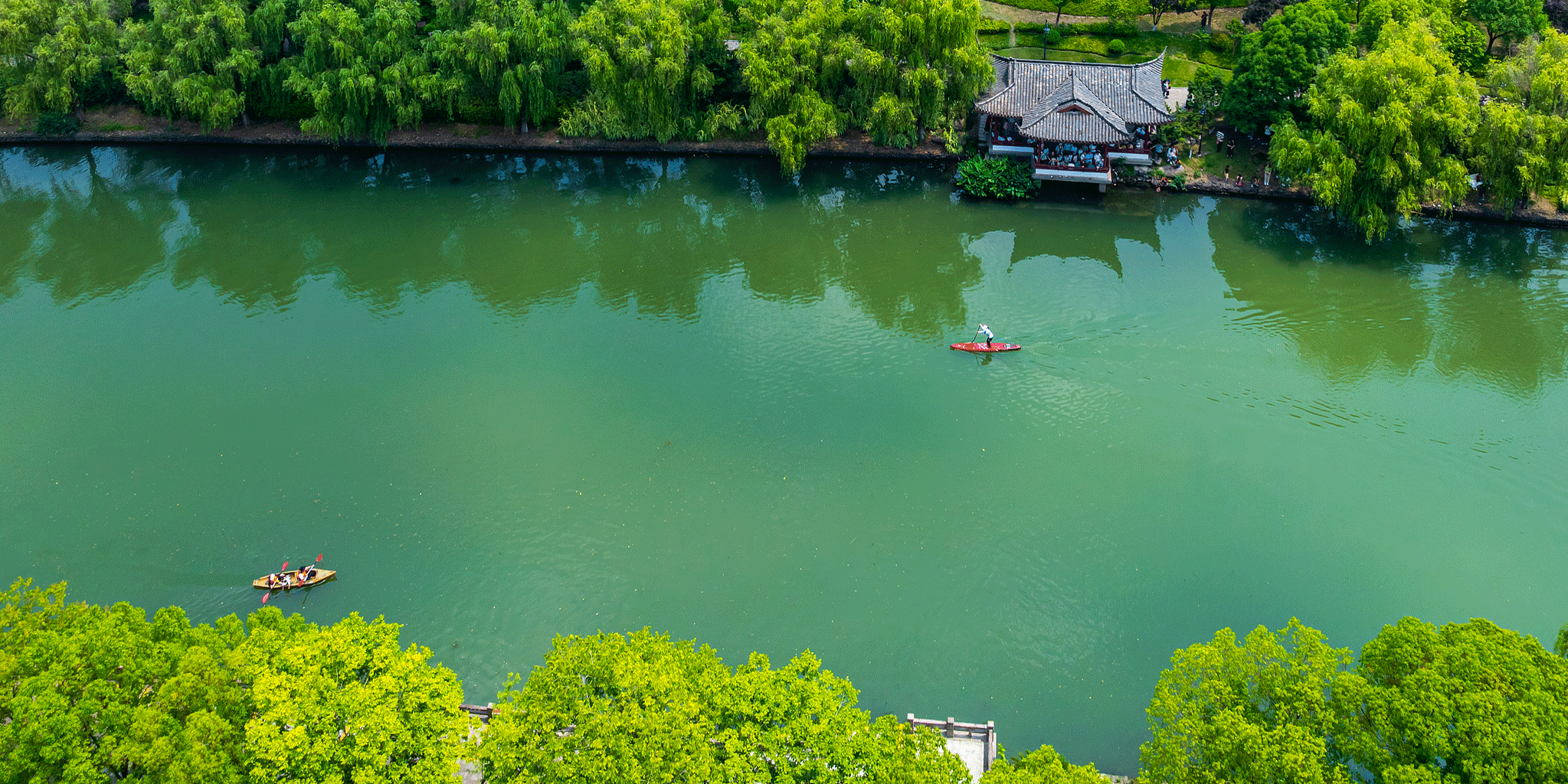
As China Cleans Its City Rivers, Locals Begin to Paddle Back In
Li Wei was half-joking when he said he’d kayak to work. Until he tried it one day in the summer of 2023 — and he hasn’t stopped since.
The 39-year-old business director now paddles six kilometers through Shanghai’s Pudong New Area each morning.
“It kick-starts my morning and fills me with energy,” he said. “Evening returns turn rush hour into an hour of quiet, aerobic calm. Paddle after paddle, the rhythm clears my mind.”
He mapped the route himself, threading narrow creeks between office parks and residential blocks on waterways long unused for daily commutes.
For decades, rivers in Chinese cities were treated as problems to manage or hide. Many were narrowed, walled off, or buried beneath highways. But with cleanup campaigns gaining momentum and long-blocked waterways reopening, an increasing number of local residents are beginning to use them again — for commutes, exercise, or simply getting around.
In southern China’s Guangzhou, stand-up paddleboarders enjoy Baiyun Lake and Haizhu Lake, with local clubs offering family-friendly programs. In the eastern tech hub of Hangzhou, kayaks and water buses weave between cargo ships on old shipping lanes. In nearby Suzhou, tour boats now move through canals originally carved for foot ferries and cargo haulers.
Social media has given the trend a name: cityboat. Like citywalk before it, the hashtag draws millions of views and encompasses everything from solo paddling routes to neon-lit cruise vlogs. On the lifestyle app Xiaohongshu, known globally as RedNote, kayaking tutorials, paddleboard selfies, and canal-view vlogs all circulate under the tag.
Li is one such vlogger. Since posting his commute on Xiaohongshu, he’s built a following in the thousands. Some of his most-watched clips — gliding in the sunset, ducking under bridges — have drawn hundreds of likes. Commenters often ask about gear, legality, launch points, and whether it’s possible to do the same in their own cities.
Shi Yuanyuan, an associate professor at Fudan University’s Department of Tourism, in Shanghai, sees cityboat as a natural evolution of Chinese reclaiming public space.
“This phenomenon aligns with a growing desire for spiritual and cultural enrichment,” she said. “For locals, it satisfies the desire to rediscover their city from a fresh aquatic perspective.”
Shi stresses, however, that each city’s water heritage is distinct. “Every route serves as a liquid thread, weaving together boat culture, riverside architecture, and waterside lifestyles,” she said.
The challenge, she adds, lies in keeping the experience rooted: avoiding copy-paste development, managing tensions between tourists and locals, and ensuring that quality, safety, and culture grow together.
Riding the wake
It took just one ride on Hangzhou’s city-run water bus last fall to hook travel blogger Xuan Zhekan.
He’d grown up in Cixi, a county-level city about 130 kilometers away, where “cityboat” meant black-canopied wupeng boats drifting through narrow canals. But in the provincial capital, he stood by the Grand Canal and watched cargo ships and commuter ferries move past.
“I’ve taken it more than a dozen times now,” he said. “It’s peaceful. And it still feels new — like I’m seeing the city from underneath.”
These days, he mostly sees only fallen leaves in the water, he said — a sharp contrast to his childhood in Cixi. “Back then, summer meant keeping windows shut against foul odors,” he recalled. “Typhoons even caused backflows, forcing us into unwanted contact with polluted water.”
Two years ago, Hangzhou opened 10 urban waterways for public use, sparking a wave of public interest in kayaking, paddleboarding, and rowing. With cleaner water and clearer safety rules, more residents are getting onto the canals.
Xuan says the policy — informally called “returning the river to the people” — has brought Hangzhou’s waterways back to life. Once limited to transport or scenery, they’re now public spaces where people reconnect with the city’s heritage as a “Jiangnan water town” — areas in China’s eastern region known historically for their canals, stone bridges, and riverside life.
Back in Shanghai, Li has started thinking bigger. He hopes the city’s waterways can function more like urban promenades — open, accessible, and guided by clear rules.
He learned the hard way: After extensive research, he discovered that personal boats are banned from major navigation channels like the Huangpu River and Suzhou Creek but not explicitly prohibited elsewhere.
Abroad, some systems blend public safety training, local oversight, and clear legal guidance. In China, by contrast, most people still rely on word of mouth and scattered posts to navigate a regulatory gray zone.
Li believes a centralized system — QR codes linking to maps, launch points, safety rules, and rental options — could make the difference.
“Technically and financially, this is feasible,” he said. “The priority is designating water management entities and establishing complete legal frameworks to normalize water activities.”
Additional reporting: Chen Zhenyang; editor: Marianne Gunnarsson.
(Header image: A man kayaks on Xitang River in Hangzhou, Zhejiang province, June 8, 2025. VCG)










